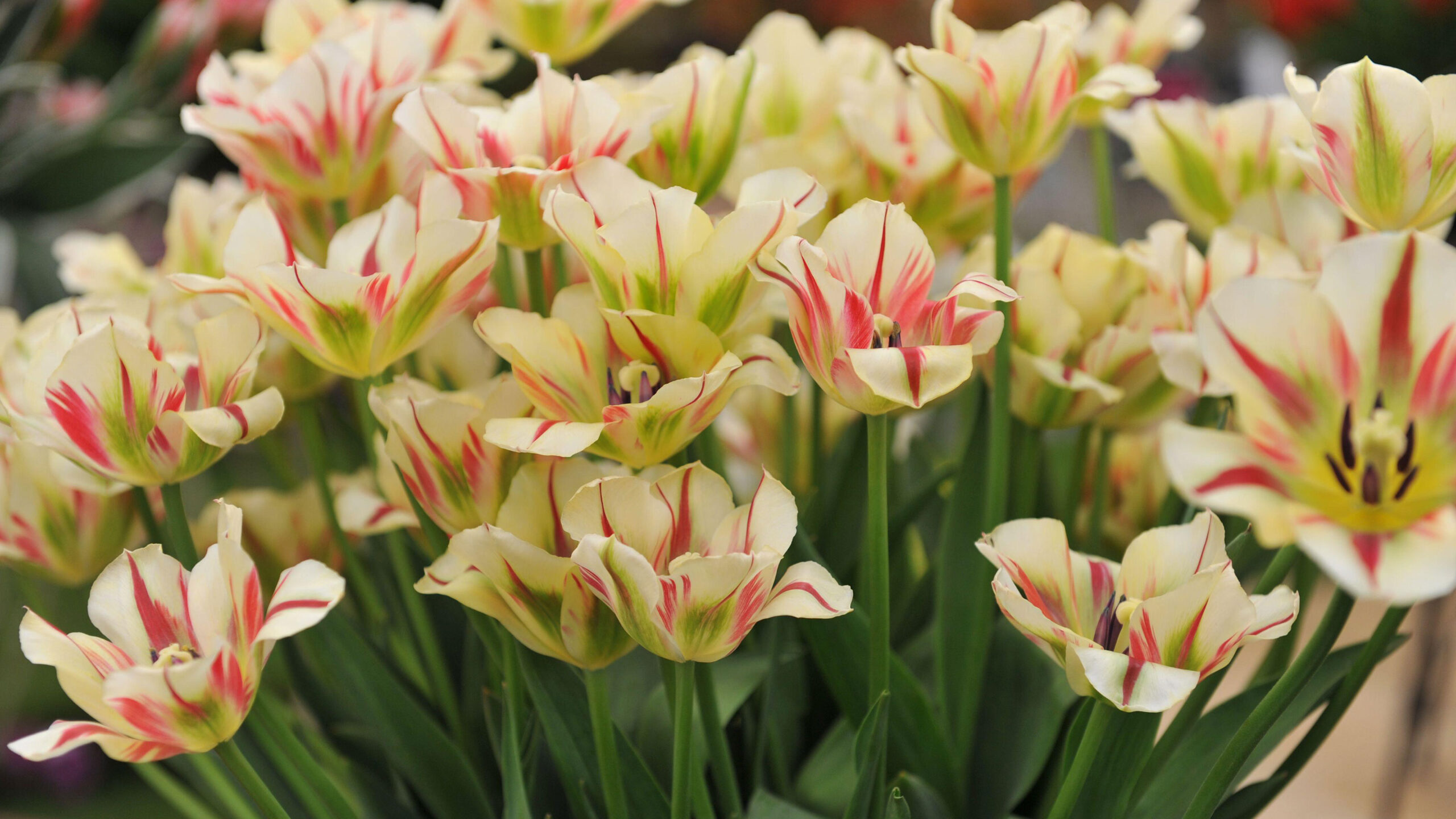Tulips are undoubtedly one of the most beloved flowers, known for their vibrant colors and elegant shapes. These spring-blooming perennials can turn any garden plot into a dazzling display of colors. With over 3,000 registered varieties, choosing the right type to plant can be both exciting and overwhelming.
How Do You Choose the Right Types of Tulips?
Choosing the right tulips for your garden involves considering climate, soil type, and the desired blooming time. Varieties differ in their resilience to cold and heat, so it’s essential to select those that will thrive in your region’s conditions. Some tulips bloom early in the spring, while others provide color until the onset of summer.
When planning your garden, think about color schemes and how the tulip blooms will complement other plants. Additionally, consider the tulip’s height and bloom size to ensure it fits well within your garden’s design.
For those looking for low-maintenance options, choosing tulip varieties known for perennializing or naturalizing in your garden can offer a recurrent display of beauty year after year.
What Are the Best Tulip Varieties for Beginners?
Beginners should look for tulip varieties that are known for their hardiness and ease of growth. ‘Queen of the Night’, with its dramatic deep-purple blooms, and ‘Jan van Nes’, celebrated for its cheerful yellow flowers, are excellent choices for novices.
Other varieties like ‘Apeldoorn’ and ‘Red Riding Hood’ are also recommended for their classic shapes and vibrant colors. These tulips are less susceptible to common diseases and can adapt to a variety of soil conditions.

For those seeking a hassle-free approach, tulip mixes are available, which provide a balanced array of colors and bloom times.
What Are the Most Unusual Tulip Varieties?
The world of tulips is filled with extraordinary varieties that can add a unique touch to any garden. ‘Ice Cream’ tulips resemble a scoop of ice cream with a white top and pink base. The fringed petals of ‘Sensual Touch’ offer a distinct, tactile experience.
Another unusual variety is ‘Parrot King’, which boasts flamboyant, ruffled edges and vibrant color patterns. ‘Black Hero’, with its deep maroon blooms, provides a dramatic contrast that can stand out in any floral arrangement.
Varieties like ‘Blue Parrot’ and ‘Green Wave’ break away from traditional color schemes, showcasing mesmerizing shades of blue and green respectively.
 What to plant in July: 12 beautiful flowers to sow and grow
What to plant in July: 12 beautiful flowers to sow and growHow Long Does It Take To Grow Tulips?
- Planting: Tulip bulbs should be planted in the fall, 6-8 weeks before a hard frost is expected.
- Growth: After planting, it takes about 8-16 weeks of cooler temperatures for tulip bulbs to develop a strong root system.
- Blooming: Most tulip varieties bloom in the spring, approximately 3-4 months after planting, depending on the climate and variety.
For a successful bloom, ensure the bulbs are planted at the correct depth and spacing. A location with full to partial sunlight and well-draining soil is ideal for tulip growth.

What Are Species Tulips and How To Grow Them?
Species tulips, also known as wild tulips, are the original forms of the cultivated varieties we commonly see. They are typically smaller, with a more natural and delicate appearance. Species tulips often perennialize, returning to bloom year after year.
To grow species tulips, select a sunny spot with well-draining soil. Plant the bulbs in the fall, at a depth about three times the height of the bulb. They are more drought-tolerant and require less maintenance than their hybrid counterparts.
Species tulips are perfect for rock gardens, borders, and naturalized garden areas. Varieties like ‘Tulipa tarda’ and ‘Tulipa sylvestris’ are popular choices among gardeners.
Where To Buy Tulips for Your Garden?
When looking to purchase tulip bulbs, consider local nurseries, garden centers, or online retailers that specialize in bulbs. Choose reputable sources to ensure high-quality bulbs with a good chance of blooming.
Many suppliers offer pre-packaged collections of tulip bulbs, curated for color harmony and sequential blooming. This can take the guesswork out of creating a stunning spring display.

It’s essential to buy bulbs at the right time, usually in late summer or early fall, to ensure they can be planted at the correct time for your region.
Related Questions on Tulip Varieties
Which Tulip Is the Most Beautiful?
The definition of beauty varies, but many consider ‘Angelique’ to be one of the most beautiful tulips. Its double flowers and soft pink coloration give it a romantic appeal.
Another contender is ‘Queen of Night’, with its near-black blooms that offer a sophisticated look. Ultimately, the most beautiful tulip is one that appeals to your personal taste and complements your garden’s aesthetic.
 Snapdragons care guide: how to plant and grow antirrhinums
Snapdragons care guide: how to plant and grow antirrhinumsWhat Type of Tulip Comes Back Every Year?
Tulips known as “perennial tulips” are more likely to come back year after year. Species tulips and Darwin Hybrid tulips, like the ‘Apeldoorn’ series, are well-known for perennializing.
For the best chances of re-blooming, provide proper care, including deadheading spent flowers and allowing the foliage to die back naturally.

What Is the Best Month to Plant Tulip Bulbs?
The best month to plant tulip bulbs is typically in the fall, when the soil temperatures have cooled down. In most regions, this corresponds to September through November.
Planting in the fall gives tulip bulbs enough time to establish roots before the ground freezes, which is crucial for spring blooms.
What Are the Longest Blooming Tulips?
For long-lasting blooms, consider Darwin Hybrid tulips, known for their extended flowering period. Also, multi-flowering tulip varieties like ‘Antoinette’ can bloom for several weeks.
Extended bloom periods can also be achieved by planting a mix of early, mid, and late-season tulips, ensuring a succession of flowers.
To give you a visual perspective on tulips, here is a video highlighting a variety of tulip types and their beauty.

With 21 stunning varieties of tulips to plant in your plot, the options are endless. Whether you’re a novice or an experienced gardener, tulips offer a way to bring color and joy to your garden every spring. By choosing the right types, providing the proper care, and experimenting with unique arrangements, your garden will become a testament to the enduring beauty of tulips.
 Best trees with berries: 10 trees to feed wildlife in your garden
Best trees with berries: 10 trees to feed wildlife in your garden
